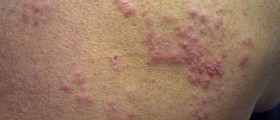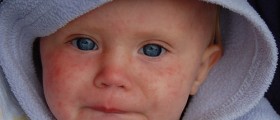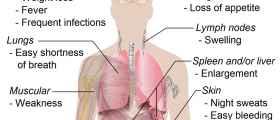
Shingles, medically known as herpes zoster, is a viral disease distinguished by a painful skin rash and blisters on the limited area of the body. The disease usually affects the region from the middle of the back around one side of the chest to the breastbone. Shingles is caused by the varicella zoster virus, which also causes chickenpox.
Shingles is, actually, condition caused by reactivated virus, which lies inactive in the nerve tissue of people who already had chickenpox. This second eruption of chickenpox is a rare but still painful condition that usually affects older adults. However, in many cases shingles occur in children.
Risk factors
Of all cases of shingles, children patients account for about 5 percent. This condition is most common in people who are 50 and older and it is associated with weakness of the immune system. Children with weaker immune system are at the higher risk of developing shingles, than children with strong immune system. Children that were affected by chickenpox before the age of one are also at the higher risk. Another strong risk factor is if the child’s mother had chickenpox while she was pregnant. Shingles in children characteristically occurs after the child is more than 3 years old.
Symptoms of shingles in children
The early signs of shingles include headache, fever, malaise and general fatigue. At the early stage, the symptoms are nonspecific and the disease may sometimes be mistaken for flu or common cold. As the disease progresses symptoms may start to include itching and oversensitivity of the skin. In contrast to the shingles in adults, shingles in children are usually painless.
The characteristic skin rash appears usually after 1 to 2 days. However, the initial stage may sometimes last as long as 3 weeks. The rash usually affects one side of the body, usually the back, chest or abdomen. The rash looks like small red bumps. Later the rash forms into the small blisters filled with fluid. The blisters are becoming cloudy or darkened as they fill with blood and the crust forms within seven to ten days. Once when the crust falls off, approximately after 10 days, the skin heals.
Treatment for shingles
Treatment for singles is aimed to reduce the severity and duration of infection and to prevent possible complications. Treatment usually involves different antiviral drugs and painkillers. However, painkillers are usually not necessary in children. An episode of shingles usually heals on its own within a few weeks.The routine childhood vaccination against chickenpox is the best prevention from shingles.

















Your thoughts on this
Loading...